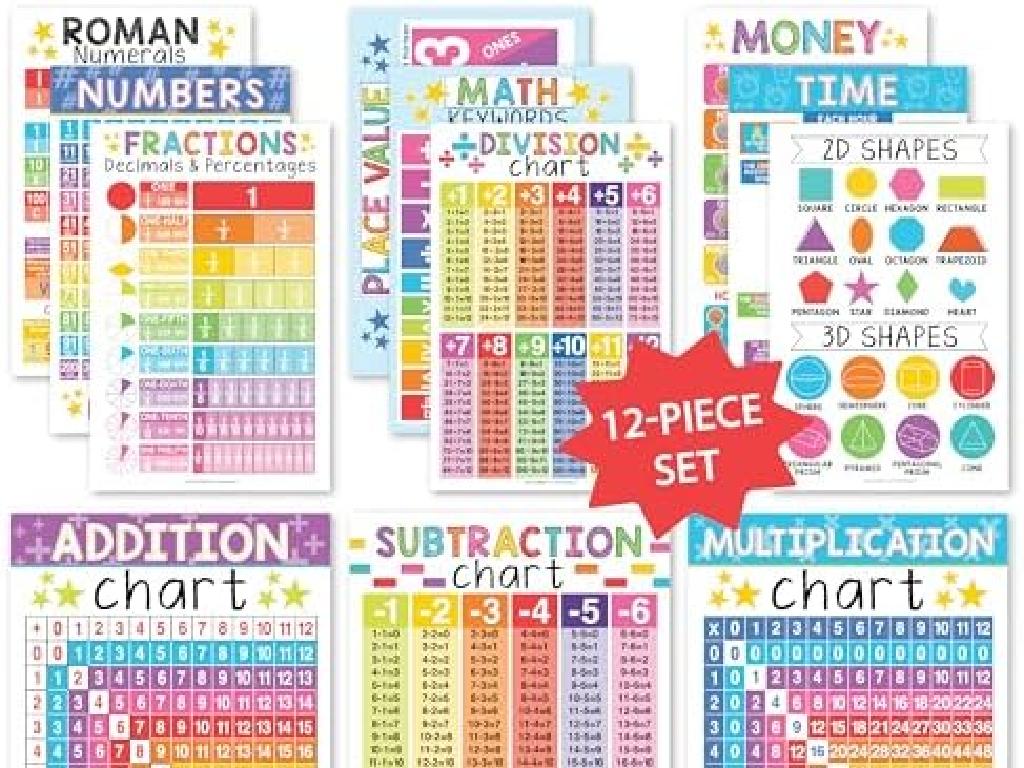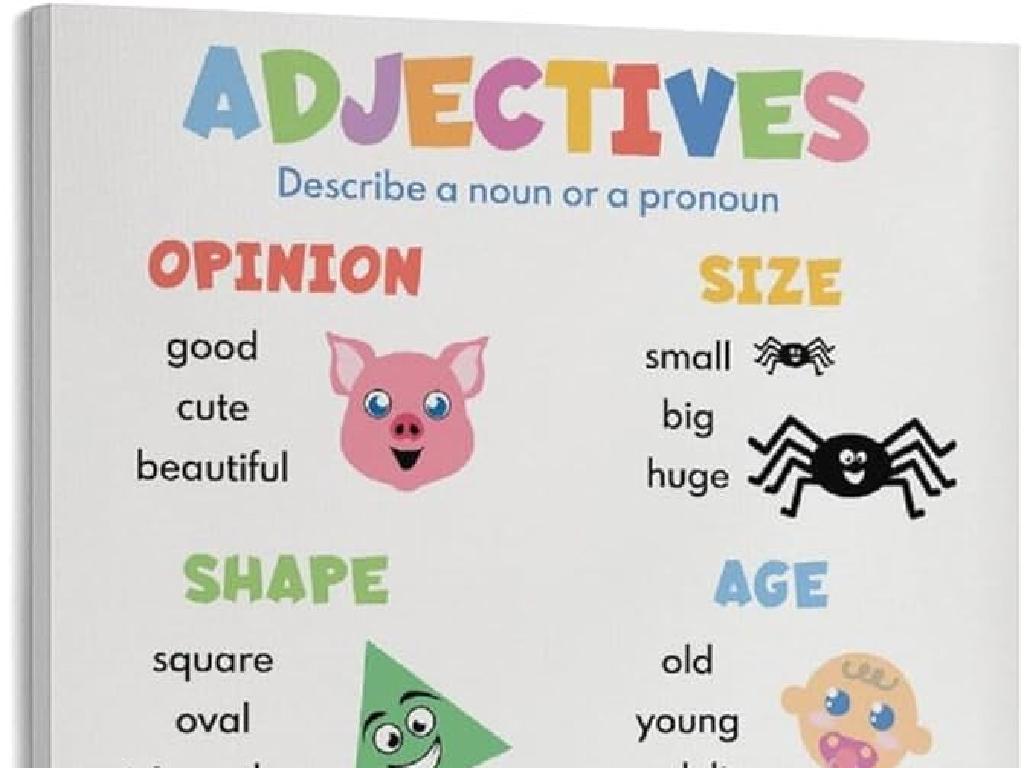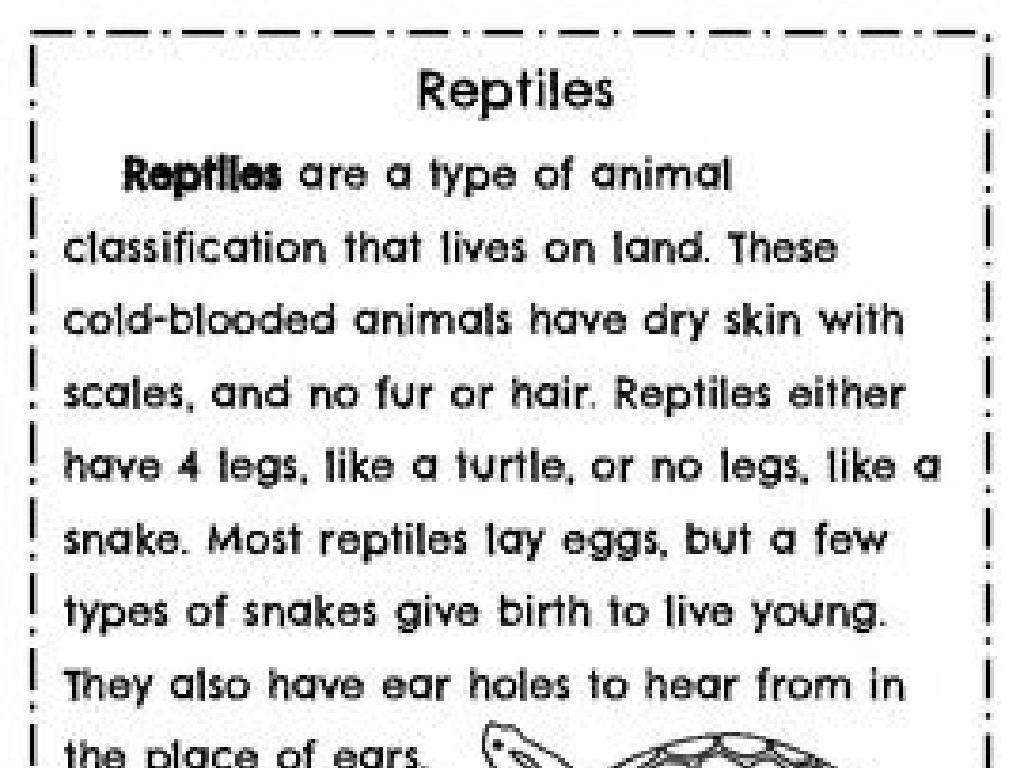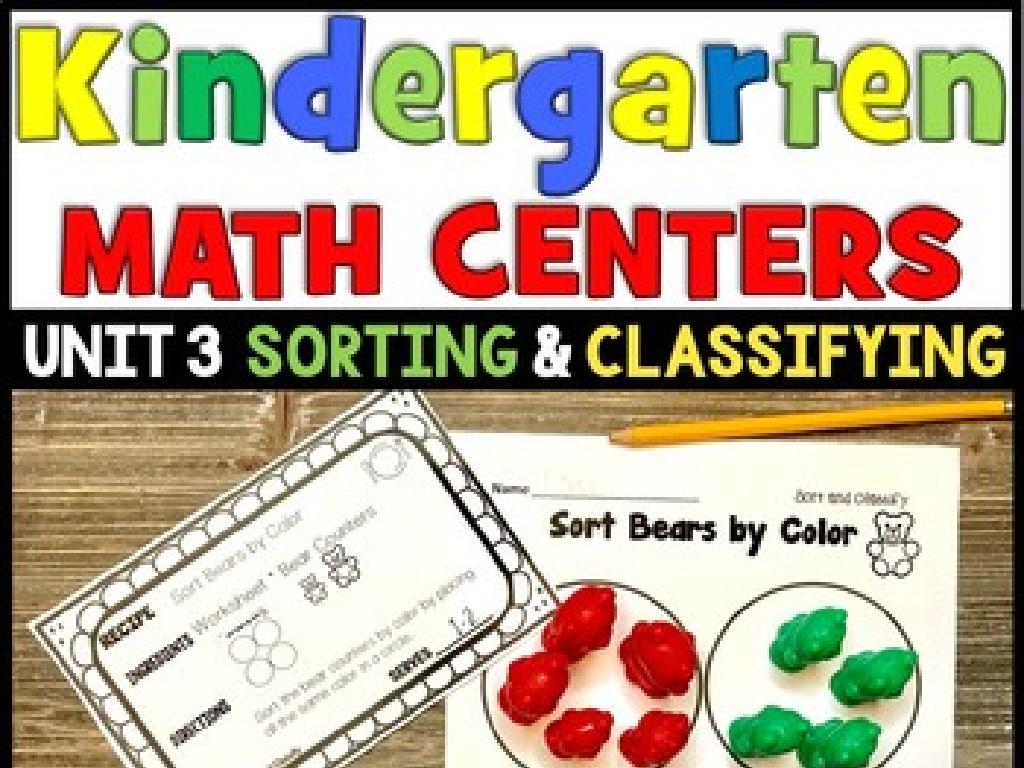Identify Infinitives And Infinitive Phrases
Subject: Language arts
Grade: Seventh grade
Topic: Verb Tense
Please LOG IN to download the presentation. Access is available to registered users only.
View More Content
Exploring Infinitives and Infinitive Phrases
– Define infinitives in grammar
– An infinitive is the base form of a verb, usually preceded by ‘to’, e.g., ‘to run’.
– Infinitive phrases and their roles
– Infinitive phrases include the infinitive and can also have objects or modifiers, acting as nouns, adjectives, or adverbs.
– Infinitives in different tenses
– Infinitives can appear in past, present, and future tenses, indicating time of action.
– Examples in sentences
– ‘To swim’ in a sentence: ‘She loves to swim.’
|
This slide introduces the concept of infinitives and infinitive phrases within the context of verb tenses. Infinitives are the most basic form of a verb and are often accompanied by ‘to’. They can stand alone or be part of a larger infinitive phrase, which may include modifiers and complements. These phrases can function as nouns, adjectives, or adverbs in a sentence. It’s important to show how infinitives can be used in different tenses to express time. Provide examples of infinitives within sentences to illustrate their use in real contexts. Encourage students to identify infinitives in sentences and consider their function and tense.
Understanding Infinitives
– Define an infinitive
– Base form of a verb with ‘to’, e.g., to eat, to dance
– Infinitive examples
– Examples: to run, to write, to be
– Infinitives as nouns, adjectives, adverbs
– They can function as subjects, objects, or modifiers
– Recognizing infinitives in sentences
|
This slide introduces the concept of infinitives to the students. An infinitive is the most basic form of a verb, usually preceded by the word ‘to’. Provide clear examples such as ‘to run’, ‘to write’, and ‘to be’. Explain that infinitives are versatile and can act as nouns, adjectives, or adverbs within a sentence. For instance, ‘to run’ in ‘I love to run’ acts as a noun. As an activity, students could identify infinitives in sentences from their reading material or create sentences using infinitives in different roles. This will help them recognize how infinitives contribute to sentence structure and meaning.
Identifying Infinitives and Infinitive Phrases
– Spot ‘to’ plus a simple verb
– Infinitives often start with ‘to’ like ‘to eat’, ‘to run’, ‘to play’
– ‘To’ isn’t always an infinitive
– ‘To’ can be a preposition, as in ‘going to the store’
– Practice with example sentences
– Find and underline infinitives in provided sentences
– Understand infinitive usage
|
This slide is aimed at helping students identify infinitives and infinitive phrases. Begin by explaining that infinitives typically consist of the word ‘to’ followed by a base verb. However, it’s crucial to distinguish that not every ‘to’ signifies an infinitive; it can also be a preposition. Provide clear examples to illustrate the difference. Engage the class with practice sentences where they identify and underline infinitives. Discuss why infinitives are used to express purposes or intentions, and how they function within a sentence. Encourage students to ask questions and provide additional sentences for practice if needed.
Exploring Infinitive Phrases
– Infinitive phrase components
– An infinitive phrase starts with ‘to’ followed by a verb
– Infinitives with modifiers
– Modifiers like adverbs or adjectives describe the infinitive
– Infinitives can have objects
– Direct objects can follow the infinitive, e.g., ‘to read a book’
– Example: to swim quickly
– ‘To swim quickly across the lake’ shows action with adverbial modifier
|
This slide introduces infinitive phrases, emphasizing their structure and function within a sentence. An infinitive phrase begins with ‘to’ plus the base form of a verb and can include various modifiers and objects. These phrases can act as nouns, adjectives, or adverbs in a sentence. The example ‘to swim quickly across the lake’ illustrates an infinitive phrase with an adverbial modifier, providing a clear model for students. Encourage students to create their own examples of infinitive phrases, incorporating different modifiers and objects to reinforce their understanding.
The Role of Infinitives in Sentences
– Infinitives as nouns
– ‘To read’ acts like the subject of the sentence.
– Infinitives as adjectives
– ‘To read’ describes the noun ‘book’.
– Infinitives as adverbs
– ‘To buy groceries’ tells us why she went.
|
This slide aims to help students identify infinitives and their role in sentences. Infinitives can function as nouns, adjectives, or adverbs. When used as nouns, infinitives can be subjects, direct objects, or subject complements. As adjectives, they modify nouns. As adverbs, they modify verbs, adjectives, or other adverbs, often indicating purpose. Encourage students to create their own sentences using infinitives in different roles. This will enhance their understanding of how infinitives contribute to sentence structure and meaning.
Let’s Practice: Infinitives and Their Functions
– Identify infinitives in sentences
– Look for ‘to’ followed by a verb, e.g., ‘to run’
– Determine functions in sentences
– Decide if it’s used as a noun, adjective, or adverb
– Share answers with the class
– Discuss your findings with peers
– Enhance understanding of infinitives
|
This slide is designed for a class activity where students will practice identifying infinitives and infinitive phrases within given sentences. They will also determine the function of the infinitive in the sentence, whether it’s acting as a noun, adjective, or adverb. Afterward, students will share their answers with the class to facilitate a discussion and reinforce their understanding. As a teacher, prepare to provide guidance on how to spot infinitives and offer examples of their function. For instance, ‘to swim’ in the sentence ‘I love to swim’ functions as a noun. Encourage students to explain their reasoning when sharing to enhance comprehension among peers.
Class Activity: Crafting Stories with Infinitives
– Write a story/paragraph with 5 infinitives
– Highlight and label infinitives’ function
– Infinitives are the ‘to’ form of the verb, e.g., ‘to run’, ‘to eat’
– Share your story with the class
– Discuss the use of infinitives
– Reflect on how infinitives enhance your writing
|
This activity is designed to help students identify and understand the role of infinitives within the context of their own writing. By incorporating at least five infinitives into a short story or paragraph, students will practice using infinitives in a creative and practical way. Highlighting and labeling will reinforce the concept of infinitives as they relate to the rest of the sentence structure. Sharing their work with the class will provide an opportunity for peer learning, and the subsequent discussion will allow students to analyze and appreciate the various functions of infinitives in writing. As a teacher, be prepared to offer examples and guide the discussion to ensure a comprehensive understanding of infinitives and their uses.
Wrapping Up: Infinitives & Looking Ahead
– Review infinitives and their functions
– Infinitives often act as nouns, adjectives, or adverbs
– Homework: Infinitive worksheet
– Complete the provided worksheet to practice identifying infinitives
– Study for verb tense quiz
– Review all verb tenses for the upcoming quiz
– Bring questions next class
– Come prepared to clarify any doubts regarding infinitives or verb tenses
|
This slide concludes the lesson on infinitives and infinitive phrases, summarizing their roles in sentences. For homework, students are expected to complete a worksheet that reinforces their ability to identify infinitives within different contexts. Additionally, students should begin studying all verb tenses in preparation for a quiz during the next class. Encourage students to bring any questions they have to the next class for clarification. This will ensure they have a solid understanding of the material and are well-prepared for the quiz.






